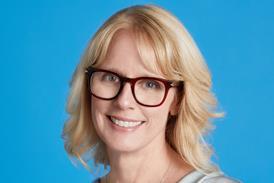With the economic crisis restricting credit in Europe, broadcast manufacturers are increasingly looking to Asia to grow their businesses. Ann-Marie Corvin previews the Broadcast Asia trade show.
This article was taken from the May/June issue of Broadcast TECH. Click here for the digital edition
The IABM’s most recent Industry Trends Survey noted that business confidence was highest in the Asia-Pacific region, followed by North America, with Europe lagging with the lowest confidence ratio.
To strengthen their push into Asia, many vendors, systems integrators and playout facilities will be heading en masse to Suntec Singapore for Broadcast Asia, the region’s biggest annual trade event.
Last year’s event attracted 10,721 trade visitors from 82 countries and regions; this year, that figure is set to rise by more than 8,000. It takes place from 19 to 22 June and is held at the same time as the Singapore-based IT and communications convention, CommunicAsia, which regularly draws the likes of Yahoo!, LG, Skype and Samsung.
Combined, these two events attracted more than 53,000 attendees last year and 2,000 exhibitors, according to Singapore Exhibition Services.
Harmonic is one company that plans to be out in force at the Pacific Rim techfest.
“Broadcast Asia is the only regional show that all the South-East Asia broadcasters attend. Being held at the same time as CommunicAsia, it is an opportunity for Harmonic to meet most, if not all, of our customers in the region,” says Andrew Thornton, vice-president of Asia-Pacific sales at Harmonic.
The timing of the show - three months before IBC - allows European vendors to gain valuable insight into the needs of the Asian marketplace, according to Micky Edwards, Miranda’s vice-president, sales, for EMEA.
“This show allows the European vendors to show off new products, discuss upcoming projects and gain a valuable insight in to what’s going on, when and with which technology,” he says.
“If you waited for IBC, it would be too late to gain the knowledge about the projects, too late to get your new products into the discussion, RFPs and the initial thought process.”
Systems integrator ATG Broadcast - which has recently completed installations for the Arab Radio and Television Network at a new site in Jeddah, Saudi Arabia, and the Astro All Asia Broadcast Centre in Malaysia - also likes the timing of the event, coming just after NAB.
“It’s an ideal venue at which to follow up on discussions initiated at NAB and to meet with people who did not have time to attend the American show,” says ATG Broadcast managing director Graham Day.
Channel-in-a-box solutions vendors are also hitting the market at a fortuitous time in Asia as deregulation across several territories means that new broadcasters are able to launch thematic channels quickly, with low-cost integrated solutions.
According to Pixel Power managing director James Gilbert, Asia is far more receptive to integrated playout systems, like its own Gallium, which will be making its debut at this month’s show.
“Some high-profile broadcasters [in Europe] tend to be sceptical about when to deploy such suites, but we meet much less resistance in Asia, where there seems to be more of an openness to early adoption,” says Gilbert.
Asia accounts for 10-20% of Pixel Power’s business and Gilbert says the manufacturer is looking at setting up a regional base there if interest in its products continues.
Oasys will be showing its automated playout software suite at its fourth outing to the event.
According to chief executive Mark Errington, Oasys has seen growth in demand for IT-based channel-in-a -box solutions in this region, which currently accounts for 5% of its business.
“Our technologies have come of age in the APAC region and concerns over the future of Harris are pushing people in the direction of IT-based playout technologies rather than old-fashioned broadcast solutions,” he says.
Errington adds that one of the biggest regional challenges the firm has faced is dealer representation, with local resellers more interested in taking on traditional broadcast manufacturers.
“That is changing now as local dealers understand what our products are about. Broadcast Asia is an ideal place to recruit new dealers and business partners.”
Digital Vision is embarking on its first solo outing as an exhibitor at Broadcast Asia and managing director Kelvin Bolah says it is benefiting from the region’s maturing technology market and the new demands this has created.
“We’ve always done well with our grading kit in Asia, but demand this year has come from the restoration side of the business, with content owners wanting to digitise their archives,” Bolah explains.
Last year, the Asian market accounted for 18% of Digital Vision’s business. Bolah estimates the figure could be as high as 30% this year, thanks to a couple of “chunky archive deals” in the region.
New Broadcast Asia exhibitor Tedial has also had interest in its archive and content management systems, and will be exhibiting its archive system, AST, at the show.
According to Tedial sales and marketing director Rafael Dubois, the company’s MAM products are particularly relevant to the Asian market because of their ability to handle multiple audio and languages.
He says Tedial’s cloud exchange platform, Media Amigo, also allows broadcasters in the region to exchange content between systems located at different sites. Meanwhile, Autoscript is pushing its extensive coverage of languages and scripts on offer in its products.
Autoscript managing director Brian Larter says that Broadcast Asia is also an opportunity to catch up with clients that didn’t attend NAB, such as TV18 and Star TV.
Other Broadcast Asia attendees include Loft London director Davide Maglio, who is seeking to extend the firm’s services in the territory.
“We deliver to platforms in the area on behalf of existing clients, and having technical partnerships within the region makes us a more efficient service provider,” he says.
Broadcast Asia takes place 19-22 June in Singapore.





























No comments yet